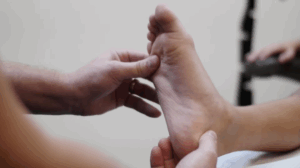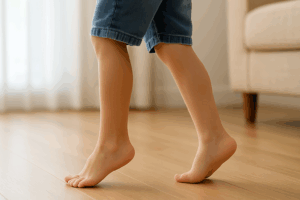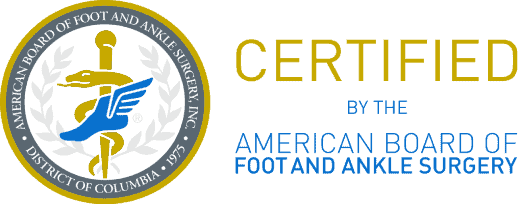Bunions are a common foot deformity, affecting around 9 million Americans annually – and that includes teenagers. If your child has a painful or aggravated bunion, you may be exploring surgical options. So what exactly sets Lapiplasty apart from traditional surgery?

How Do Bunions Form?
A bunion (hallux valgus) develops as the big toe drifts towards the smaller toes, forcing the metatarsal bone it’s attached to into an abnormal position. This unstable foundation leads the tip and big toe joint to angle outward and form an often painful protrusion along the inside of the foot.
Traditional Surgery Techniques
Standard bunion removal procedures like bunionectomies and osteotomies focus solely on shaving down the bunion itself or making a bone cut to move the metatarsal into better alignment. However, these methods don’t address joint instability in multiple planes of motion or use adequate fixation to prevent relapse.
Why Traditional Techniques May Fail Long-Term
Since traditional surgeries only provide temporary short-term correction, recurrence rates are exceptionally high. Up to 78% of bunions return, even when initial post-surgical results seem good. That’s because the unstable foundational cause is never properly rebuilt and stabilized. Teens that undergo surgery this way often require additional revision procedures down the road due to reoccurrence after remaining foot growth.
Lapiplasty Provides An Advanced, More Reliable Approach
The innovative Lapiplasty Procedure utilizes patented techniques to rotate the entire metatarsal back into its normal 3D alignment and secure it with titanium plates and screws. This reconstruction and fusion of the unstable foundation allows reliable correction of the root bunion issue. Data shows Lapiplasty dramatically reduces recurrence while promoting consistent, predictable results across all age groups.’

Key Differences In Surgical Methods
Lapiplasty
- Comprehensively corrects in 3 dimensions
- Addresses foundational instability
- Utilizes fixation for permanent correction
- Enables earlier weightbearing
- 6 weeks recovery to normal shoes
- Very low 10-15% recurrence rate
Traditional Surgery
- Limited 1-dimensional correction
- Doesn’t stabilize root cause
- No reliable fixation
- 1-2 months till walking recovery
- High 40-78% recurrence rate
As is clear from the data, Lapiplasty goes beyond surface-level improvement to rebuild, realign and permanently stabilize the entire foundational structure causing bunions. The fusion and internal bracing safeguard long-term bunion elimination versus high failure rates with outdated approaches.

Get Your Child’s Feet Back to Pain-Free Fast
Lapiplasty’s precision correction methodology and titanium plating technology allow for earlier weight bearing and faster recovery too – meaning less interruption to your teen’s demanding schedule. If non-surgical options haven’t adequately relieved bunion discomfort, explore Lapiplasty with your pediatric specialist.







